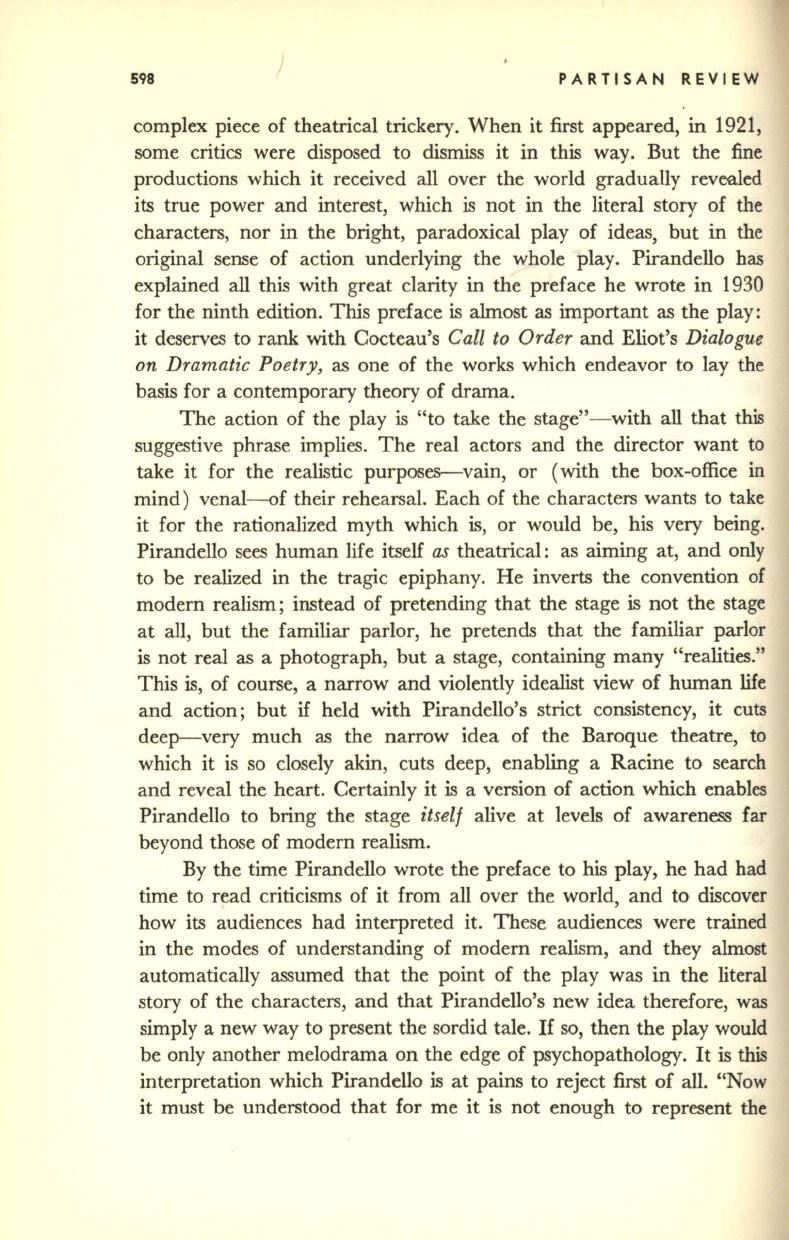
598
PARTISAN REVIEW
complex piece of theatrical trickery. When
it
first appeared, in 1921,
some critics were disposed to dismiss it in this way. But the fine
productions which it received allover the world gradually revooled
its true power and interest, which is not in the literal story of the
characters, nor in the bright, paradoxical play of ideas, but in the
original sense of action underlying the whole play. Pirandello has
explained
all
this with great clarity in the preface he wrote in 1930
for the ninth edition. This preface is almost as important as the play:
it deserves to rank with Cocteau's
Call to Order
and Eliot's
Dialogue
on Dramatic Poetry,
as one of the works which endeavor to lay the
basis for a contemporary theory of drama.
The action of the play is "to take the stage"-with all that this
suggestive phrase implies. The real actors and the director want to
take it for the realistic purposes--vain, or (with the box-office
in
mind) venal-of their rehearsal. Each of the characters wants to take
it for the rationalized myth which is, or would be, his very being.
Pirandello sees human life itself
as
theatrical: as aiming at, and only
to be realized in the tragic epiphany. He inverts the convention of
modern realism; instead of pretending that the stage is not the stage
at all, but the familiar parlor, he pretends that the familiar parlor
is not real as a photograph, but a stage, containing many "realities."
This is, of course, a narrow and violently idealist view of human life
and action; but if held with Pirandello's strict consistency, it cuts
deep-very much as the narrow idea of the Baroque theatre, to
which it is so closely akin, cuts deep, enabling a Racine to search
and reveal the heart. Certainly it is a version of action which enables
Pirandello to bring the stage
itself
alive at levels of awareness far
beyond those of modern realism.
By the time Pirandello wrote the preface to his play, he had had
time to read criticisms of it from all over the world, and to discover
how its audiences had interpreted it. These audiences were trained
in the modes of understanding of modern realism, and they almost
automatically assumed that the point of the play was in the literal
story of the characters, and that Pirandello's new idea therefore, was
simply a new way to present the sordid tale.
If
so, then the play would
be only another melodrama on the edge of psychopathology. It is
this
interpretation which Pirandello is at pains to reject first of all. "Now
it must be understood that for me it is not enough to represent the


